Some Conclusions About the First Creation Story in the Bible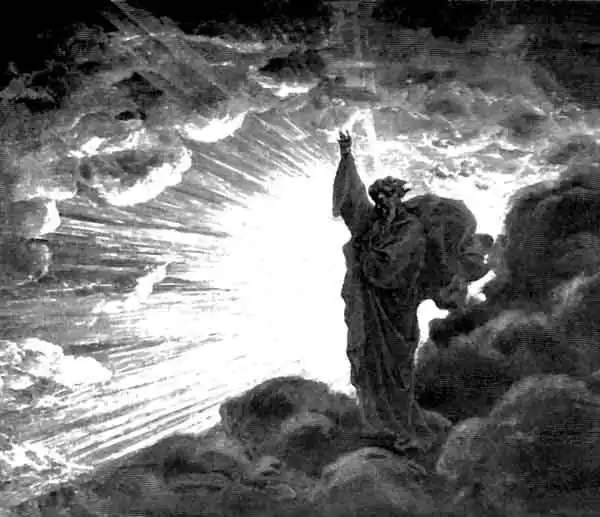
Genesis 1 Creation Examined, part 7
7 Some conclusionsBoth Augustine and Martin Luther have as their main perspective on Genesis 1 that it must confirm their faith, in all of its details. They accept that there are confusing elements that they are unable to explain, but they refuse to settle for sometimes obvious solutions, which challenge their Christian beliefs in any way. The text is the truth, in their minds, so they just have to try to figure that unquestionable truth out.
Without this prerequisite, a reading of Genesis 1 hints at other explanations. The plural Elohim, supported also with some of the verb forms, strongly indicates that the root of this creation myth is to be found in some kind of polytheism. More gods than one were at the scene, when the world was created. This is quite plausible, since it is the case with most creation myths — also the ones being the closest to Genesis 1 in place and time. Monotheism is extremely rare, and almost as rare is a world creation taking place with only one god present. Gods are usually the first to appear and to multiply. This seems to have been the case also with whatever cosmogony Genesis 1 is based on.
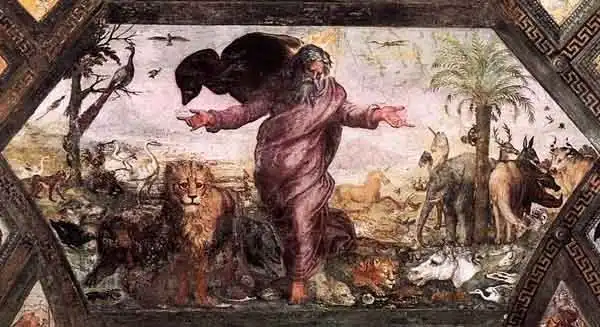 God creates the land living animals, by Raphael Sanzio 1519.
The distant and impersonal nature of the gods, Elohim, and the undramatic way in which mankind is created, indicates a mythology where the gods have a world of their own, and where they are rather indifferent to the appearance and continued adventures of human beings. This is quite a common setting in mythologies. The divine world is one of enough tidings and drama to keep the gods occupied, without their need to interfere the least with human affairs. The continued interaction between Jahve in Genesis 2 and mankind, seems way out of character for Elohim of Genesis 1, who has a very detached way of igniting the process of creation. It seems to be rather automatic after the very first act — that of bringing light to the world. Light separates the sky from the sea, its heat removes water and exposes land, and it is the main force in making life emerge from the sea, the air, and the earth. This initial step of bringing light is the most characteristic ingredient of Genesis 1, and a spectacular opening at that. The seemingly endless chaos of darkness and a primordial ocean is suddenly interrupted by light, like dawn repaints the landscape afore the naked eye. Each dawn the world is recreated, in as much as it again manifests itself. Each dusk the primordial dark chaos returns. This is a very ancient way of seeing the cyclic order of creation. And the creator god can have been none other, originally, than the sun.
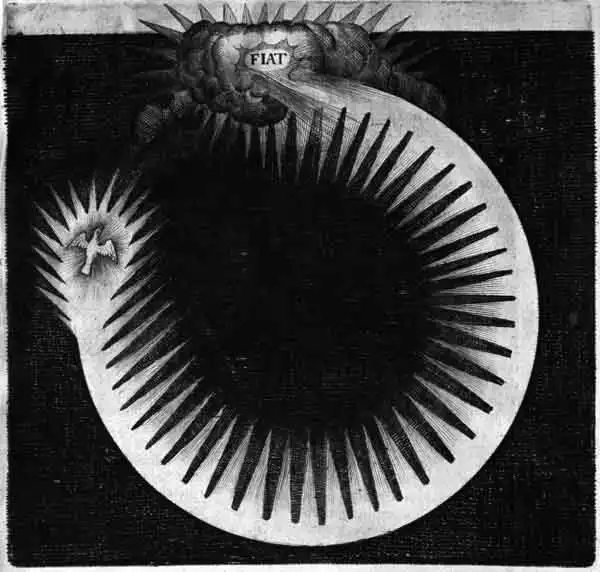 Fiat (Latin for "Let there be"), the word by which God creates. This is a symbolic depiciton of how God's spirit in the form of a dove creates light. Illustration from Utriusque Cosmi Historia, by Robert Fludd, 1617.
Mainly, the distanced and detached process of Genesis 1 makes it clear why the Bible needed another creation story, with passion, drama, and personal interactions — that of Genesis 2. A people would find it very hard indeed to feel chosen and defined, with just Genesis 1 as the story of their coming into being. 1 Genesis — The TextGenesis 1 CreationThe first creation of the Bible
This article was originally written for a seminar at the Department of History of Ideas and Learning, Lund University, as a part of my dissertation in progress on creation myths and their patterns of thought. Transforming the text to webpages, I have excluded footnotes, or edited them into the text.
MENUCreation Myths Around the WorldHow stories of the beginning began.
The Meanings of MythologyTheories through history about myth and fable.
Archetypes in MythsThe mythological symbols and what they stand for.
The Logics of MythPatterns of creation.
ContactAbout Cookies
CREATION MYTHS IN DEPTHCreation in Rig Veda 10:129The paradox of origin, according to an Indian myth.
Genesis 1The first creation story of the bible scrutinized.
Enuma ElishThe ancient Babylonian creation myth.
Xingu Creation of ManThe insoluble solitude of gods and humans.
ON MY OTHER WEBSITESPsychoanalysis of MythWhat Sigmund Freud and C. G. Jung thought about myths, their origins and meanings.
Myth of CreationAn introduction to the subject of creation myths and the patterns of thought they reveal.
Cosmos of the AncientsWhat the Greek philosophers believed about the cosmos, their religion and their gods.
Life EnergyThe many ancient and modern life force beliefs all over the world explained and compared.
TaoisticTaoism, the ancient Chinese philosophy of life explained. Also, the complete classic text Tao Te Ching online.
|
 Archetypes of Mythology
Archetypes of Mythology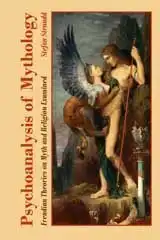 Psychoanalysis of Mythology
Psychoanalysis of Mythology Cosmos of the Ancients
Cosmos of the Ancients Life Energy Encyclopedia
Life Energy Encyclopedia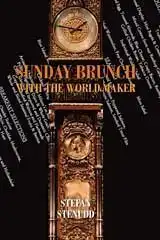 Sunday Brunch with the World Maker
Sunday Brunch with the World Maker Fake Lao Tzu Quotes
Fake Lao Tzu Quotes Stefan Stenudd
Stefan Stenudd